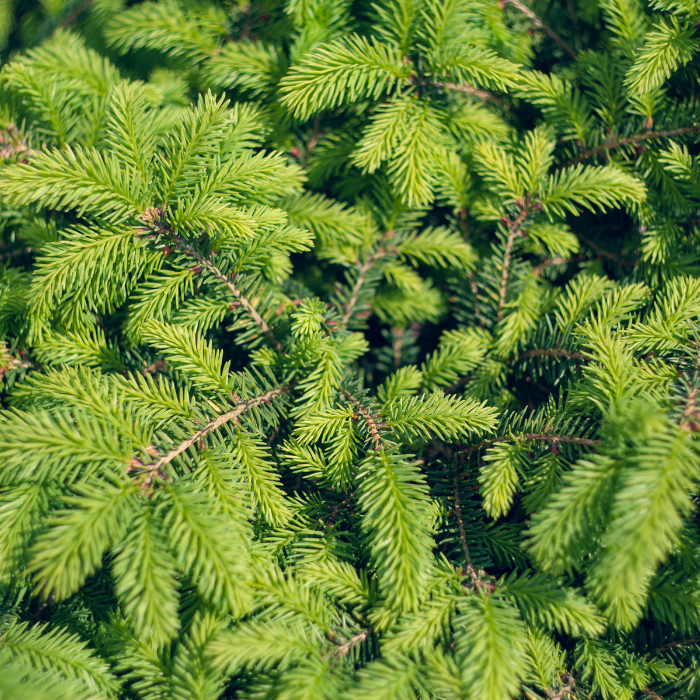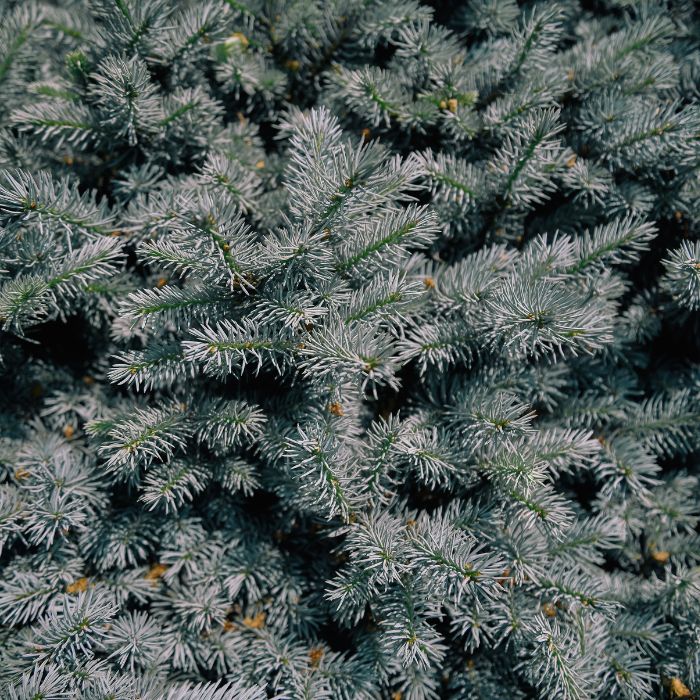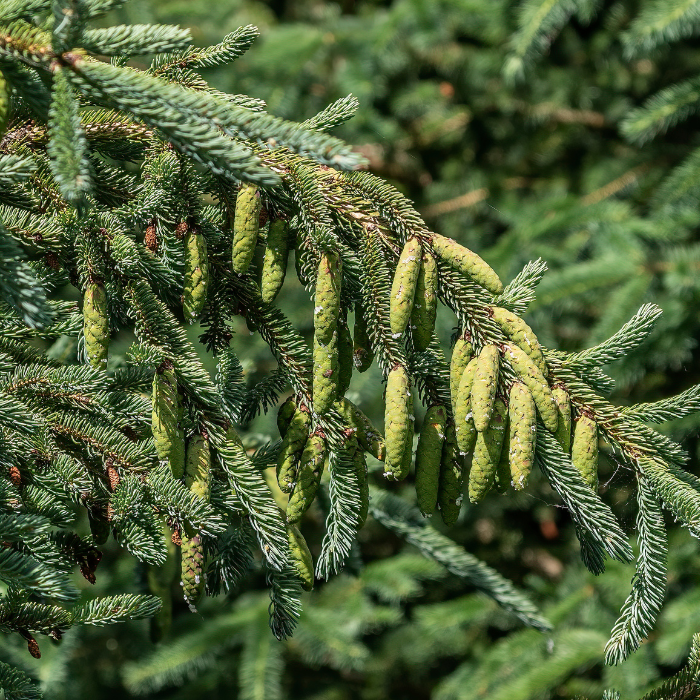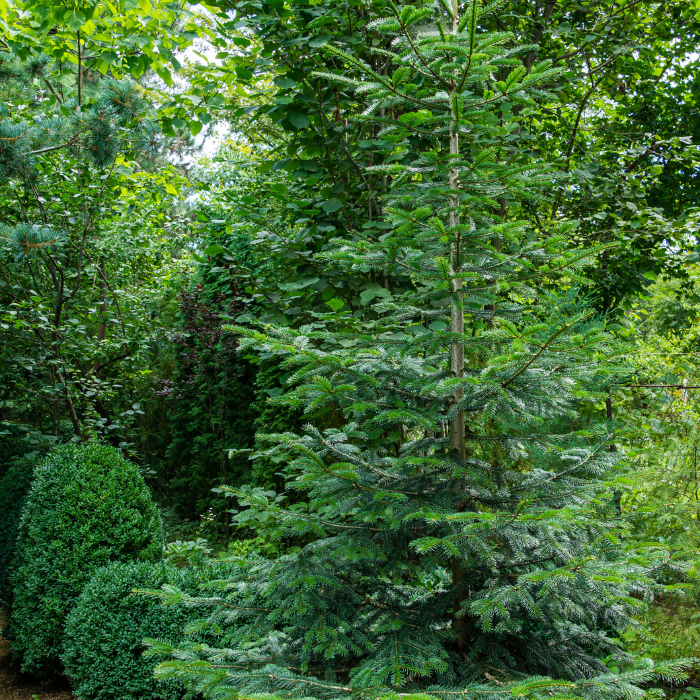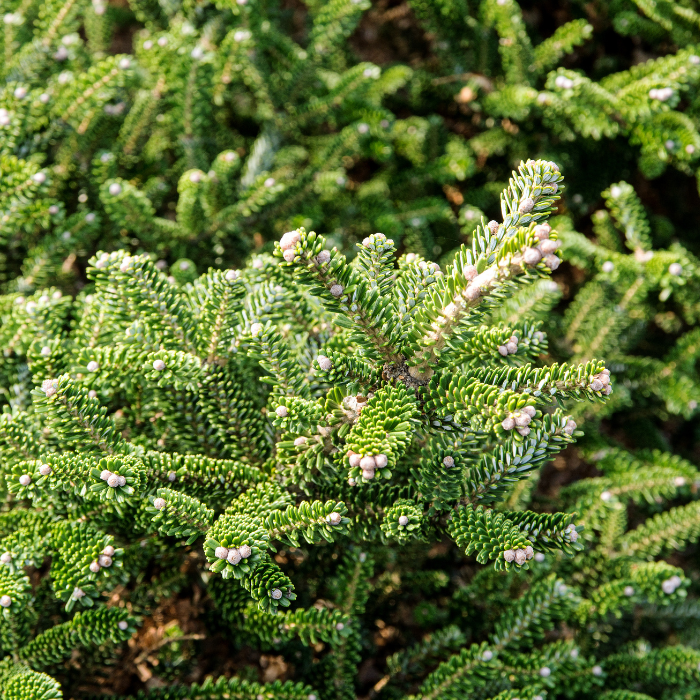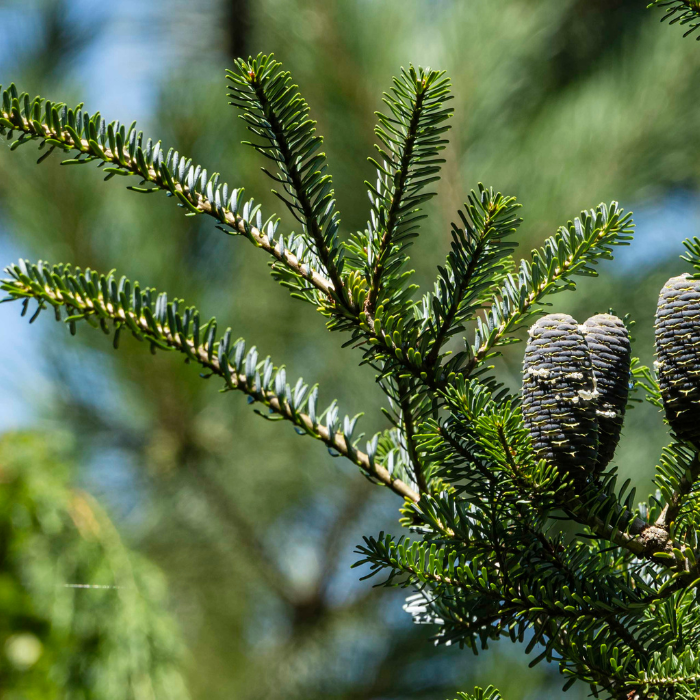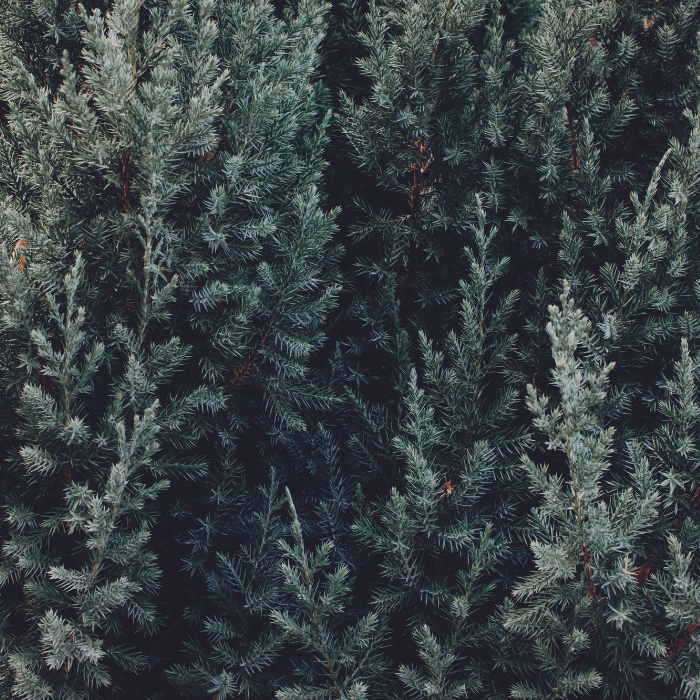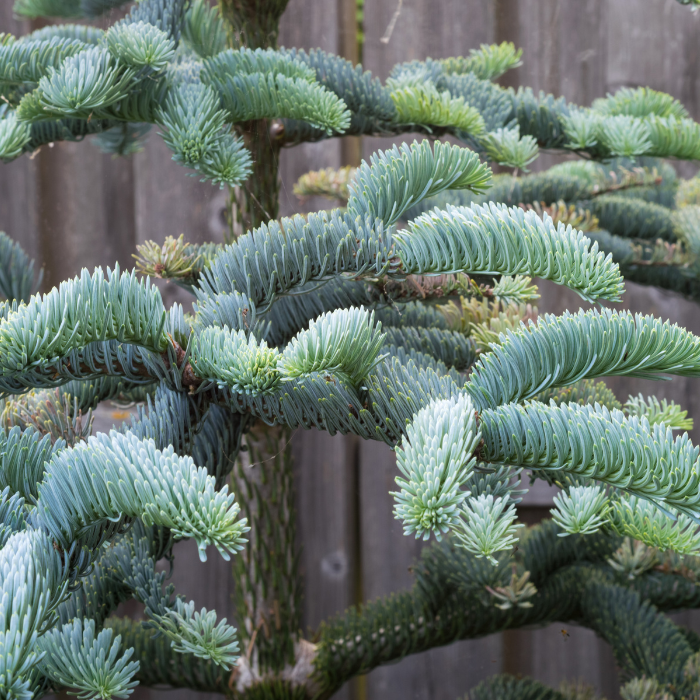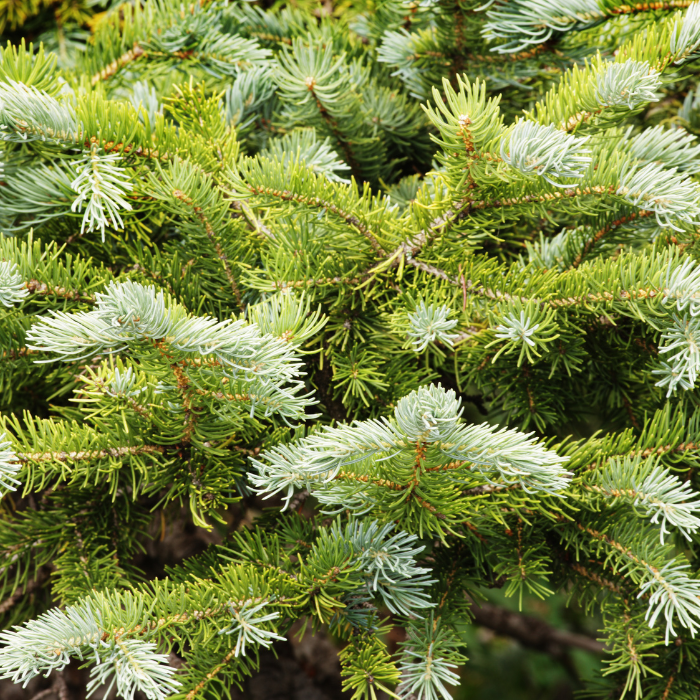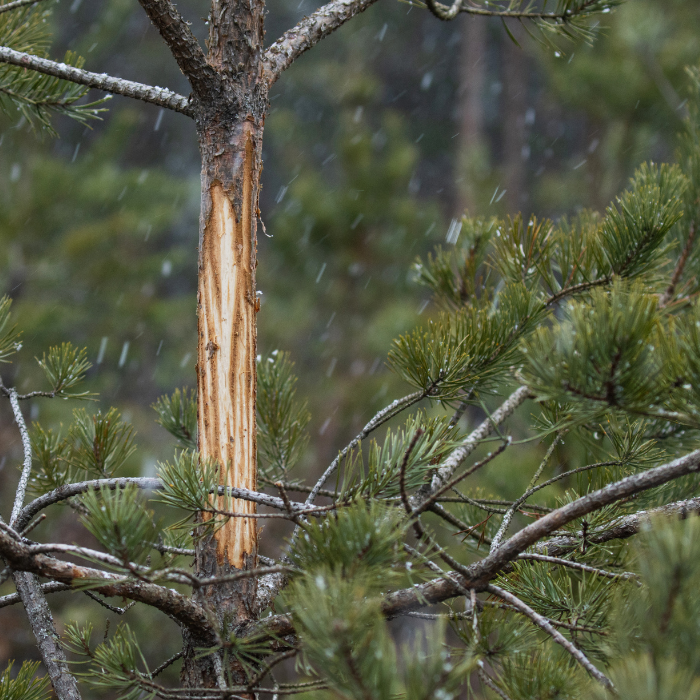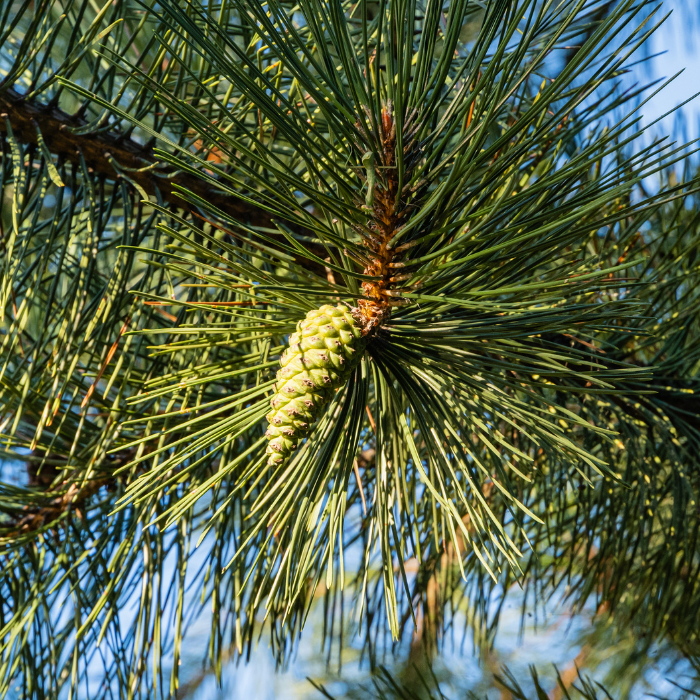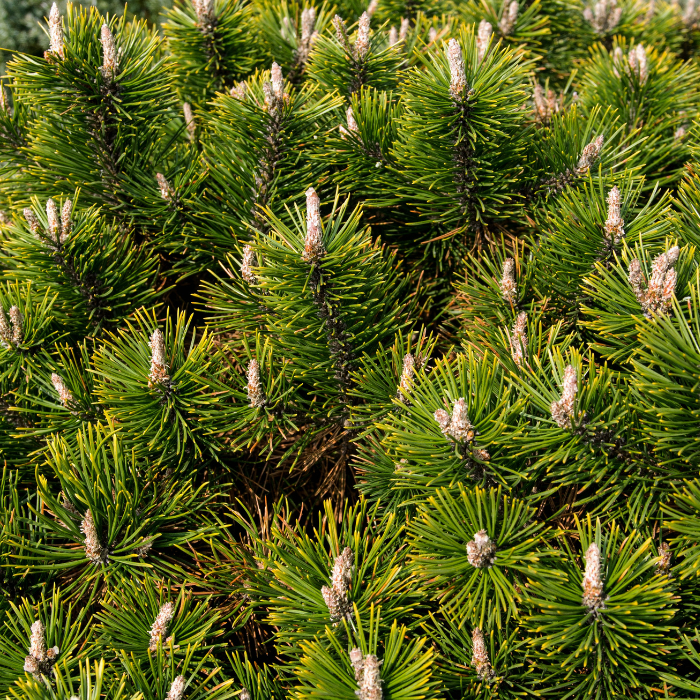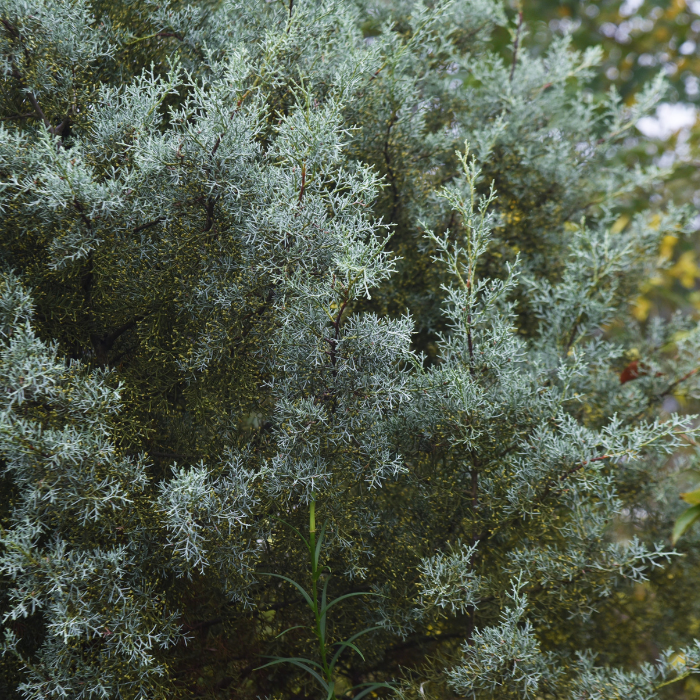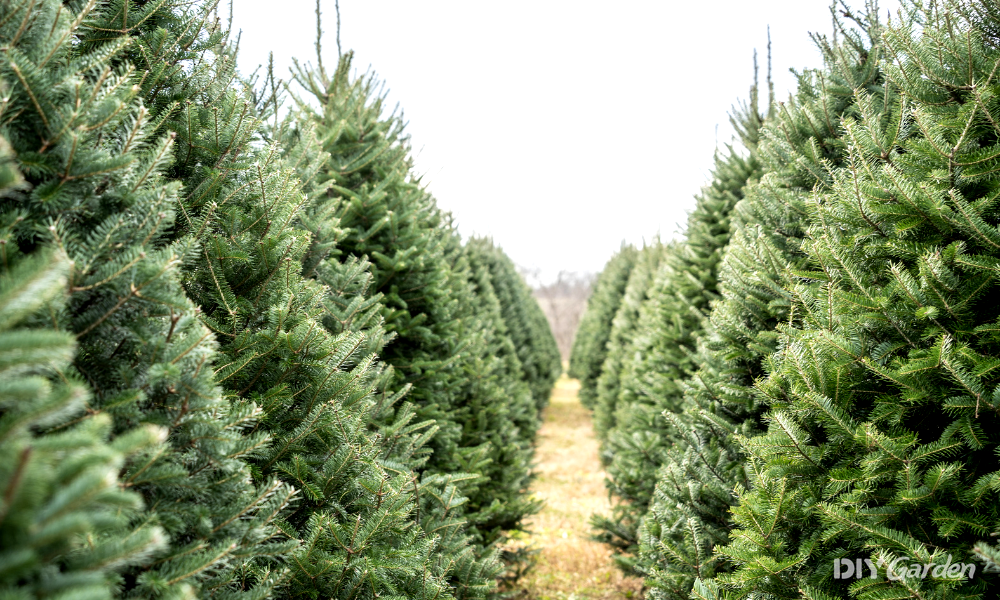
What’s your favourite part of Christmas? Is it all of the family getting together? Perhaps it’s the prospect of a white sprinkling of snow.
For me, nothing beats the tree. From choosing the best one with your loved ones to decorating it with classic Christmas songs in the background, the Christmas tree is a festive must-have. And that’s not even going into detail about the smell! That aromatic, earthy smell that brings instant relaxation – I can’t get enough!
But have you noticed that there isn’t only one type of Christmas tree? In fact, there are many Christmas tree varieties available. Yet some are better suited to the task than others. And I don’t need to tell you – the last thing you want to do is pick the wrong tree. I’m picturing a wonky-shaped tree littering your home with needles!
In this blog post, we’ll explore the 17 best types of Christmas trees for a flawless festive season. From glorious scents to long-lasting needles, you’ll find all the information you need to make the best choice this festive season!
Spruce Trees
Spruce trees are a long-standing tradition at Christmas, having been placed in homes at Christmas time since the 16th century. We tend to love them for their dense branches, producing a pleasing shape, and their foliage’s rich green colour. They’re also widely available, which certainly helps!
1. Norway Spruce (Picea abies)
Norway spruce is a popular choice of Christmas tree in the UK because of its distinctive, familiar fragrance and classic, conical shape. These trees benefit from extremely strong branches, making them perfect for supporting ornaments, lights, and decorations. So, if you like to heavily decorate your tree, the Norway spruce could be the choice for you!
Unfortunately, the Norway spruce is one of the first to drop its needles. So, if you can, try to buy your Norway spruce closer to Christmas. To keep your Norway spruce going strong for as long as possible, ensure you place it away from a radiator or heated spot and water it every single day!
2. Serbian Spruce (Picea omorika)
Serbian spruce has a sleek, slender appearance, so it’s a top option for smaller homes or tight spots. Its branches are typically evenly spaced, making it extremely aesthetically pleasing, and the leaves emit a strong fragrance. So, if you’re like me and can’t live without the Christmas tree smell in the festive season, the Serbian spruce is a great option.
Many also love the Serbian spruce because of its unique colour. Unlike the characteristic vibrant green many of us envision at Christmas, the Serbian spruce has a blue-green hue, making it a unique vision and sight to behold.
3. Blue Spruce (Picea pungens)
Living up to its name, the blue spruce is another variety that displays a highly distinctive colour. This tree’s bluish-grey foliage sets it apart from the other evergreen trees on this list and adds a certain element of charm if you ask me!
This tree is known for its pleasant aroma, emitting a sweet piney scent that adds to the holiday ambience but won’t overpower your space. If you find strong smells unbearable, I consider the blue spruce for its subtle scent alone!
The blue spruce’s needles are also much longer-lasting than the Norway spruce, giving it the upper hand in some ways.
4. White Spruce (Picea glauca)
The Alberta white spruce is a beautiful Christmas tree due to its compact shape, bluey hue, and dense branches. It grows slowly, at around 5 cm per year, making it an excellent choice as a small Christmas tree for houses with low ceilings or on top of a table or windowsill.
I recommend this variety for those who want the nostalgia of a Christmas tree without the faff of moving around a big, heavy tree!
5. Sitka Spruce (Picea sitchensis)
Sitka spruce can be used as a Christmas tree and has been in the past, which is why it features on this list. But for all intents and purposes, I don’t recommend welcoming it into your home this festive season. For one, they look their best when cut only a week before Christmas, cutting the festivities very short. And secondly, the Sitka spruce needles are incredibly sharp, which doesn’t make it fun to accidentally bump into or decorate! For this reason, it’s definitely not suitable for households with little ones or pets!
Fir Trees
Fir trees are another hot pick for Christmas trees in the UK. We love them for their classic pyramidal shape, their long-lasting needles, and their beautiful, evergreen scent. However, there’s not only one fir tree we like in our homes at Christmas, oh no. There are 8 popular varieties to choose from!
6. Nordman Fir (Abies nordmanniana)
The Nordmann fir (which we’ll talk about in more detail very soon!) is by far the most popular Christmas tree in the UK, with over 80% of us choosing them for our homes! So, what makes it so special? Well, it has everything we tend to want – a symmetrical shape, strong branches for lots of ornaments, and verdant green needles that hold their own over the whole Christmas period.
The Nordmann fir can handle a little neglect, which may be why it’s such a popular choice. If you don’t get around to watering it every day, that’s OK. Plus, it’s not fragranced, which is a big win for families with allergies.
7. Balsam Fir (Abies balsamea)
Balsam firs have exceptional needle retention, making them a prime candidate for a Christmas tree. They also have a blue-green colour and strong festive scent, which makes them stand out in a typical Christmassy decorative display. Unfortunately, Balsam firs aren’t common in the UK and are only available in a limited number of nurseries. So, if the Balsam fir is the one for you, you may need to look far and wide to find one!
8. Korean Fir (Abies koreana)
The Korean fir hasn’t been around as a Christmas tree for long and is relatively new in the UK. So, similar to the Balsam fir, it may be difficult to find at first. However, it’s definitely worth the hassle if you want a slightly different look this Christmas. It has unique needles that curl upwards, revealing its silvery-white undersides – this colour sets them apart from other Christmas trees.
It has a similar scent to the Nordmann fir and Norway spruce but has far better needle retention, which is a win-win!
9. Fraser Fir (Abies fraseri)
The Fraser fir has become more popular in recent years due to its consistently dense structure and pyramidal shape that many of us class as the perfect Christmas tree form. Its silver-green needles are soft to the touch – making them child and pet safe – and last for a long time, provided you keep it away from heat sources and water it regularly.
This tree has a gorgeous citrussy scent which pairs perfectly with pomanders and other Christmassy citrus decorations.
10. Douglas Fir (Pseudotsuga menziesii)
The Douglas fir is better known for its use as timber than a Christmas tree, but that doesn’t mean to say it doesn’t have good qualities that make it a worthy contender. The Douglas fir can grow up to 100m, so it’ll suit a large, double-height ceiling entryway or large home and has a pleasant orangey aroma.
This is a pet-friendly tree and the perfect choice if you have kitties. If your cat is like mine, it simply loves to clamber up the tree! Luckily, with the Douglas fir, you’ll at least know your cat is safe – even if they’re still being a nuisance! The soft, pliable needles won’t stick in their paws, and they’re not toxic, so they won’t cause tummy upset if your kitty nibbles a few.
11. Noble Fir (Abies procera)
If you have a large house or double-height living room or entryway, the Noble fir may be another top choice for you. This tree grows up to 30 m outside. However, you’ll typically find Noble fir Christmas trees up to 8 ft tall. Nevertheless, this is a lofty height that will create a real spectacle in any home.
Like many of the firs on this list, the Noble fir has great needle retention. But it has a milder scent than many of the other trees on this list, which could be a good or bad thing, depending on your preference!
12. Grand Fir (Abies grandis)
Grand fir trees stay healthy for a long time, so you’ll be able to buy this tree early during the Christmas period and trust that it stays green and lively until New Year’s. It has the strongest scent of all of the firs, so if you can’t live without the festive scent of your Christmas tree, the grand fir is an excellent pick.
Unfortunately, however, this tree isn’t the best choice if you have lots of heavy ornaments, as its branches tend to be a little flimsy.
Pine Trees
Pine is a family of trees with many admirable qualities when it comes to Christmas time. For one, their stiff branches are strong enough to hold even the weightier baubles and decorations without bending. Plus, their needles are soft and strongly scented, giving you a hit of nostalgia every time you walk into the room.
13. Scots Pine (Pinus sylvestris)
Scots pine trees are one of the best in terms of needle retention of all of the trees on this list. The tree also tends to last a long time and is resistant to drying out, so it’s perfect if you like to put your tree up nice and early (like me!).
Scots pine trees have a glorious pine smell that fills the room, maximising the Christmassy feeling in your home. The Scots pine is a prime choice for recycling, as it makes an excellent outdoor tree too! So, simply plant it up and dig it out, ready for next year!
READ NEXT: How to Plant a Christmas Tree in the Garden
14. Austrian Pine (Pinus nigra)
The Austrian pine is a resilient tree that performs well as a Christmas tree. It has long, thin needles which tuft at the end of its branches, giving this tree a unique appearance that you won’t find in many other trees this Christmas.
These used to be popular Christmas trees, but their popularity has declined in recent years, perhaps as their highly individual appearance has fallen out of style. Nevertheless, if you have lots of heavy ornaments and a big space for your tree, the Austrian pine is an option.
15. Lodgepole Pine (Pinus contorta)
The lodgepole pine is an exceptional accessory to a larger room due to its thick-set, bushy shape and strong aroma. This tree is also one of the prime picks if you like to keep things as eco-friendly as possible, as it requires very little non-natural intervention to look wonderful.
Furthermore, this is one of the best choices if you have little kiddies running around this Christmas. The big, super soft needles won’t cause any damage if there are slips, falls, or accidental collisions with the tree. However, it is a little harder to get hold of in the UK, as it’s less common than some of the other varieties.
Cypress Trees
Cypress trees are excellent if you struggle with allergies in your household, as they don’t produce sap or a strong scent like firs and pines. Because of this, you’re safe if you have an allergy to sap or are sensitive to strong smells. These trees also hold their needles well for Christmas, seeing you through to the new year in style.
16. Leyland Cypress (Cupressus x leylandii)
The Leyland cypress is a hybrid of the Monterey cypress and Alaskan cedar. It’s referred to as a “sterile” hybrid because it doesn’t naturally occur and was bred by accident at Leighton Hall in 1888 by C. J. Leyland in the South of Wales.
Leyland cypress is the most popular Christmas tree in the South-East, but it isn’t used very often in the UK. However, some of its cultivars have become popular, such as the Leighton Green and Castlewellan.
17. Arizona Cypress (Cupressus arizonica)
Arizona cypress is a drought and heat-tolerant tree that’s native to northern Mexico and southwestern US. It’s most commonly used as a Christmas tree in these regions, but you can still find it in some farms and garden centres across the UK.
If you really pay attention to this one, you’ll notice tiny white spots on this tree’s needles. These are resin glands that release a pleasant evergreen scent when you brush past them. It also has awe-inspiring cherry-coloured stems, which really pop when you add red and gold ornaments.
FAQs
What are the five common types of Christmas trees?
The Nordmann Fir, Norway Spruce, Fraser Fir, Blue Spruce, and Scots Pine are the most common types of Christmas trees in the UK. The Noble Fir and Lodgepole Pine follow closely behind.
What type of Christmas tree is most popular?
The Nordmann Fir is the most popular Christmas tree in the UK, with around 80% of us choosing one for our homes, according to the British Christmas Tree Growers Association. This is followed by the Norway Spruce, which around 10-15% of us buy.
What is better, Fraser Fir or Nordmann Fir?
As a general consensus, the Nordmann Fir is considered better. However, it’s a matter of personal preference. The Frasier Fir has a classic appearance and is slightly slimmer, so it’ll likely suit a smaller home better.
What type of Christmas tree stays fresh the longest?
Among the most common Christmas tree varieties in the UK, the Nordmann Fir is often touted as one of the best options for maintaining freshness and needle retention throughout the Christmas period. It also has a vibrant green colour and soft needles, making it an excellent choice for any household this Christmas.
If you enjoyed this and want to maximise the festivities in your garden this Christmas, you’ll love our 7 Creative DIY Ideas To Transform Your Garden This Christmas!
